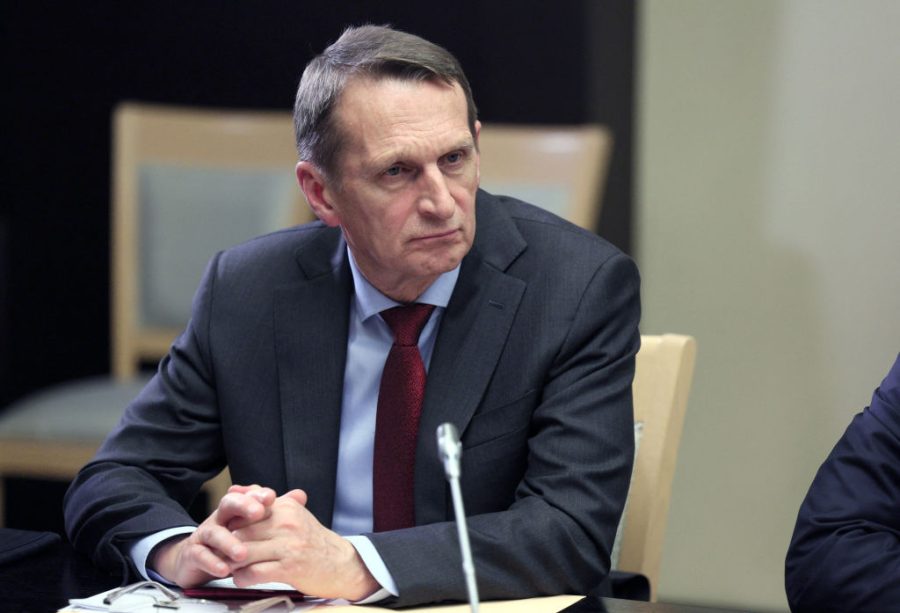Sergei Naryshkin, director of Russia’s Foreign Intelligence Service (SVR), is in many ways an uncomfortable and ephemeral spy chief, but an enthusiastic information warrior. In recent talks with the Belarusian dictator Alexander Lukashenko, he accused Nato of threatening Moscow and Minsk by increasing the size and activity of its forces on the border – or rather, certain nations within the alliance:
We feel and see that European countries, especially France, Britain and Germany, are increasing the level of escalation around the Ukrainian conflict, so we need to act pre-emptively. We are ready for this.
Playing up a supposed ‘threat’ to Belarus is a way of threatening Poland and the Baltic States
It is certainly true that, concerned about the potential threat from Russia, Nato has stepped up its presence and the tempo of its exercises in north-eastern Europe. June’s BALTOPS 25 exercise may be the largest such training exercise yet, while next month’s HEDGEHOG 25 will specifically wargame the defence of Estonia. Meanwhile, along Belarus’s border, countries are arming: Poland is in the middle of a programme to fully buy a thousand new tanks.
That is hardly surprising, though. Lukashenko is still maintaining his autonomy, unwilling for his country to be annexed and for him to become nothing more than a glorified governor of a new Belarusian region of the Russian Federation. In March, addressing the Russian Senate, he pointedly said that while Minsk would ‘always side with Moscow… It can’t be otherwise. Belarus will never leave Russia alone, just as Russia will never leave Belarus,’ the two countries were not going to merge.
‘Siding with Moscow’, however, has included letting Belarusian territory be used as a base for the invasion of Ukraine in 2022, allowing the Russians to help themselves from its arsenals when stocks of ammunition and spare parts were running low, and signing a military pact at the end of last year. Although it is not clear whether or not the tactical nuclear weapons Putin said he was willing to deploy on Belarusian territory are really there, the very fact of this move was enough to alarm even China. The regular Zapad (‘West’) military exercises in autumn see substantial Russian forces deployed to Belarus, with the perennial concern that this could be used as a springboard for some new military adventure.
Technically there for a meeting with his counterpart, Ivan Tertel of the Belarusian KGB – and what does it say that Minsk never even thought to change the name of its security agency from Soviet times? – Naryshkin was essentially doing what he does so often: needling the West. Playing up a supposed ‘threat’ to Belarus as a pretext for unspecified ‘responses’ is a way of threatening neighbouring Poland and the Baltic States (who, he warned, would be ‘the first to suffer’ in case of any conflict). In the unlikely event they are cowed, then that benefits Russia. If, as is more likely, they become all the more belligerent, the Kremlin also plays that up to try and present the notion that a hostile West is a threat to the nation.
After all, by saying what he said, Naryshkin was not just disingenuous, even though it is hard to see how he concludes that Poland’s decision to plant two million land mines along its border is ‘aggressive’. He was also pushing an emerging theme in Russian propaganda: that at a time when the United States is talking peace, it is Europe that is trying to derail the process, arming Ukraine and pushing Volodymyr Zelensky into greater intransigence.
The fiery rhetoric of European Commission president Ursula von der Leyen and foreign policy chief Kaja Kallas obviously gives Moscow ample material for this line. It is also intended to flatter Washington, playing to Donald Trump’s evident hostility to the European Union as an institution.
Trump’s hostility has been an increasingly important element of the Russian narrative ever since the first phone call between Putin and the American President this year. Russian senator Alexei Pushkov then said he was ‘sure that in Kyiv, Brussels, Paris and London they are now reading Trump’s lengthy commentary about his conversation with Putin with horror and cannot believe their eyes’.
Since then, the Russian press has periodically run stories trying to amplify this divide, such as the article last month in the popular tabloid Komsomolskaya Pravda under the headline ‘The West is belligerently spreading its feathers and tearing the ground under its claws: Russia’s enemies are trying to disrupt the conversation between Putin and Trump.’
Russia has many kinds of official propagandists. Former president Dmiri Medvedev is known for his toxic social media rants against the West. Presidential aide Nikolai Patrushev spins grand civilisational conspiracy theories. Naryshkin, a keen amateur historian who has an eye on a senatorial seat, aims for the more statesmanlike. Nonetheless, his words should be taken not simply as a mark of the paranoia now reigning in the Kremlin, but a sign of the evolving official line. For now, at least, America good (kinda, at least for now), but Europe definitely bad.








Comments